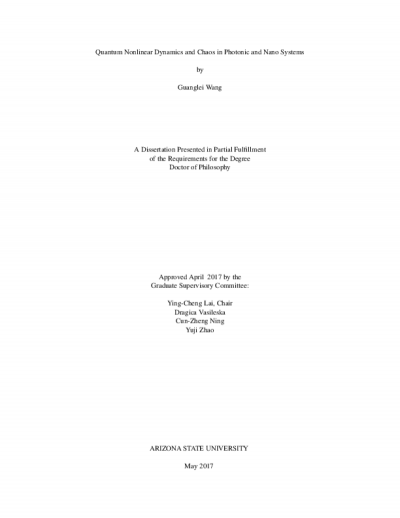Fabrication, Characterization, and Device Applications of Few-Layer Black Phosphorus

Description
Few-layer black phosphorous (FLBP) is one of the most important two-dimensional (2D) materials due to its strongly layer-dependent quantized bandstructure, which leads to wavelength-tunable optical and electrical properties. This thesis focuses on the preparation of stable, high-quality FLBP, the characterization of its optical properties, and device applications.Part I presents an approach to preparing high-quality, stable FLBP samples by combining O2 plasma etching, boron nitride (BN) sandwiching, and subsequent rapid thermal annealing (RTA). Such a strategy has successfully produced FLBP samples with a record-long lifetime, with 80% of photoluminescence (PL) intensity remaining after 7 months. The improved material quality of FLBP allows the establishment of a more definitive relationship between the layer number and PL energies.
Part II presents the study of oxygen incorporation in FLBP. The natural oxidation formed in the air environment is dominated by the formation of interstitial oxygen and dangling oxygen. By the real-time PL and Raman spectroscopy, it is found that continuous laser excitation breaks the bonds of interstitial oxygen, and free oxygen atoms can diffuse around or form dangling oxygen under low heat. RTA at 450 °C can turn the interstitial oxygen into dangling oxygen more thoroughly. Such oxygen-containing samples show similar optical properties to the pristine BP samples. The bandgap of such FLBP samples increases with the concentration of the incorporated oxygen.
Part III deals with the investigation of emission natures of the prepared samples. The power- and temperature-dependent measurements demonstrate that PL emissions are dominated by excitons and trions, with a combined percentage larger than 80% at room temperature. Such measurements allow the determination of trion and exciton binding energies of 2-, 3-, and 4-layer BP, with values around 33, 23, 15 meV for trions and 297, 276, 179 meV for excitons at 77K, respectively.
Part IV presents the initial exploration of device applications of such FLBP samples. The coupling between photonic crystal cavity (PCC) modes and FLBP's emission is realized by integrating the prepared sandwich structure onto 2D PCC. Electroluminescence has also been achieved by integrating such materials onto interdigital electrodes driven by alternating electric fields.
Date Created
The date the item was original created (prior to any relationship with the ASU Digital Repositories.)
2022
Agent
- Author (aut): Li, Dongying
- Thesis advisor (ths): Ning, Cun-Zheng
- Committee member: Vasileska, Dragica
- Committee member: Lai, Ying-Cheng
- Committee member: Yu, Hongbin
- Publisher (pbl): Arizona State University








